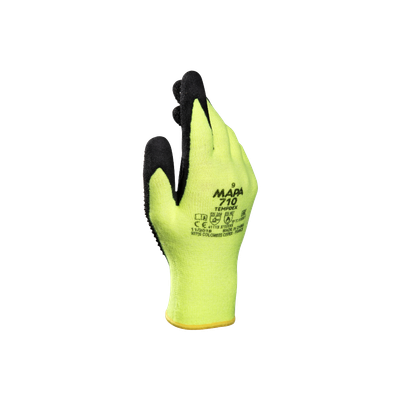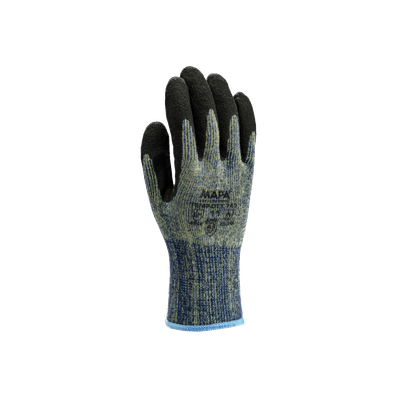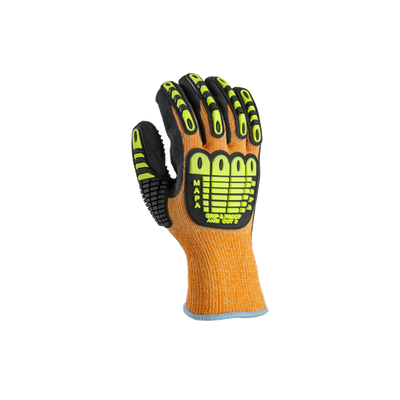Temp-Tec NL517
A double-layer glove, with thermal insulation and extended length for extra arm protection.
-
CAT. 3
 0334
0334
-
 2212
2212
- ACJKL
-
 02XXXX
02XXXX
-
 111
111
Specific advantages
 Thermal protection
Thermal protection
- Excellent thermal insulation, due to double-knit cotton
 Productivity
Productivity
- Good grip when handling wet or slippery objects,
 Skin protection
Skin protection
- Multi-purpose chemical resistance (acids, aliphatic solvents) increased by the thickness of the material
Applications
Mechanical industry
- Chemical treatment of metals
- Oil quenching of steel
Food industry
- Filleting Fish
Petrochemical industry
- Sampling of hot petrochemical products
Other industries
- Boiler room work
- Handling of hot piping
- Handling of moulds in the ceramic industry
- Manufacture of adhesives
- Manufacture of insulating electric wires
- Road works in cold conditions
- Steam cleaning
Rubber industry
- Polymer extrusion
Product detail
| Material | Polychloroprene |
|---|---|
| Colour | black, blue |
| Interior finish | Knitted thermal protection |
| Exterior finish | Pebbled |
| Length (inches) | 17.0” |
| Thickness (inches) | Heavy Weight |
| Size | 8 9 10 |
| Packaging | 1 pair/bag 6 pairs/carton |
Chemical chart
OVERALL CHEMICAL PROTECTION RATING
Protection rating is determined by taking into account the effects of both permeation and degradation in an attempt to provide users with an overall protection guideline when using our glove products against specific chemicals.
Meaning of the colours :
The chemical test data and overall chemical protection rating should not be used as the absolute basis for glove selection. Actual in-use conditions may vary glove performance from the controlled conditions of laboratory tests. Factors other than chemical contact time
| Chemical Product | CAS # | Breakthrough time (minutes) |
Permeation level |
Standard | Degradation level |
Rating |
|---|---|---|---|---|---|---|
| 2,4-Di-tertiary Butylphenol 99% | 96-76-4 | 29 | 1 | ASTM F739 | NT |
|
| Acetonitrile 99% | 75-05-8 | 66 | 3 | EN 374-3:2003 | NT |
|
| Methanol 99% | 67-56-1 | >480 | 6 | EN 374-3:2003 | NT |
|
| n-Heptane 99% | 142-82-5 | 41 | 2 | EN 374-3:2003 | NT |
|
| Sodium hydroxide 20% | 1310-73-2 | >480 | 6 | EN 374-3:2003 | NT |
|
| Sodium hydroxide 40% | 1310-73-2 | >480 | 6 | EN 374-3:2003 | NT |
|
| Sulfuric acid 96% | 7664-93-9 | 190 | 4 | EN 374-3:2003 | NT |
|
| Sulfuric acid 96% | 7664-93-9 | 86 | 3 | EN 374-3:2003 | NT |
|
*not normalized result





